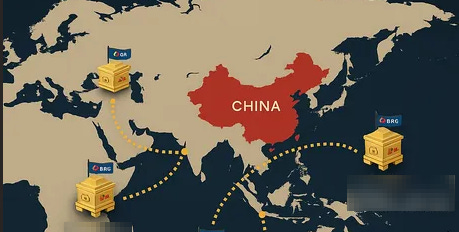Housekeeping: We have several posts in the cue on the BRICS Summit. This one is a summary of their agenda as it pertains to next steps towards Gold as a tool of dedollarization and with it internationalizing Yuan use.
China’s Strategy: Brics Global Vault Network
Saudi Vault: The Core of the Network
Southeast Asia Vaults: A Regional Gold Corridor
Africa Vaults: Expansion and Integration
IMF Projection and Reserve Shifts
Six Key Takeaways
China’s Strategy: Brics Global Vault Network
The plan, layout, and strategic channels for China to build overseas gold vaults represent one of its key initiatives going forward. Here are the 3 key steps in the rollout.
1. Saudi Arabia: The Core of the Network
China’s first major move is the construction of a vault in Saudi Arabia, which it considers the core hub of the overseas expansion. China plans to establish a Shanghai Gold Exchange International (SGEI) vault in the kingdom. This vault will directly support the exchange of renminbi (RMB) and gold, aligning with the broader framework of energy cooperation between China and Saudi Arabia.
This echoes the earlier example discussed years ago first and exclusively here, when China and Russia initiated gold-backed yuan trade deals.
As of 2024, RMB settlement now accounts for 15% of China-Saudi trade. Saudi oil exports to China have reached $58 billion. Through this Treasury mechanism, Saudi Arabia may convert its RMB trade surplus—roughly $30 billion—into gold assets. The goal is to mitigate risks associated with U.S. dollar exchange rate fluctuations.
2. Southeast Asia: A Regional Gold Corridor
The second pillar of China’s strategy is the construction of a Southeast Asian regional network. China has established gold delivery houses in ASEAN countries, including Singapore and Malaysia.
For instance, the Shenzhen Treasury provides direct access to Macau via the “Golden Road,” reducing transportation costs by 30%. This initiative is part of a pilot program offering gold-pledged RMB loan services.
Additionally, the Singapore and Malaysia vaults are distributing 100-gram RMB-denominated gold bars. The goal is to lower investment barriers and stimulate gold consumption across Southeast Asia.
In 2024, trade volume between ASEAN and China reached $620 billion, and annual gold demand is projected to exceed 80 tons.
3. Middle East and Africa: Expansion and Integration
The third initiative is expanding gold infrastructure in the Middle East and Africa. Dubai, which was once the only significant competitor to Shanghai in gold trading in the BRICS, has now partnered with the Shanghai Gold Exchange.
Together, they launched a gold contract priced in “Shanghai Gold”—that is, in renminbi, not dollars. This is part of a broader shift in pricing benchmarks, a trend that could ultimately displace the U.S. dollar.
This partnership is also piloting a closed-loop oil-gold-RMB trading system. Middle Eastern oil exporters will be able to settle oil revenues in RMB and convert them into gold held in local vaults.
Meanwhile, Africa is being linked into the system through Belt and Road logistics infrastructure. Here, the mechanism is gold-mortgage financing to support infrastructure development. Gold is pledged, deposited into the system, and used as collateral to secure financing—effectively, gold for infrastructure.
If the pilot in Saudi Arabia is successful, it could give rise to a “Saudi-Southeast Asia-Africa Golden Corridor.” This would further promote the concept of “People’s Gold,” a term with socialist resonance, aimed at appealing to populations with lingering socialist frameworks—particularly in the Global South.
IMF Projection and Reserve Shifts
According to the International Monetary Fund, by 2030, the Chinese yuan could account for over 5% of global reserve currencies. The emergence of a gold-backed credit system may become a key variable in the ongoing wave of dedollarization.
Six Key Takeaways
Gold as a Tool for Internationalization – China is using gold to promote the international use of the renminbi.
Gold Pricing Power – It is asserting itself in international gold pricing, aiming to be on equal footing with the U.S.
BRICS Trust Through Gold – Localization of gold ownership is fostering trust within the BRICS community.
Collateral Centralization – Gold is being centralized as collateral to support structured lending models.
Overseas Vault Network – The Belt and Road is increasingly “paved with gold.”
Reglobalization via Trust – China’s model seeks to reglobalize finance through trust backed by tangible assets.
end this piece//////////
ther will be two more on topic this weekend


















Share this post